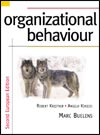 |
1 |  | 
According to McGregor’s Theory Y, the typical employee can learn to accept and seek responsibility. |
|  | A) | True |
|  | B) | False |
 |
 |
2 |  | 
According to W. Edwards Deming, when things go wrong, there is roughly a 70 percent chance the system (e.g. management, machinery, or rules) is at fault and about a 30 percent chance the individual employee is at fault. |
|  | A) | True |
|  | B) | False |
 |
 |
3 |  | 
___________ is the process of working with and through others to achieve organizational objectives in an efficient and ethical manner. |
|  | A) | Total quality management |
|  | B) | Management |
|  | C) | The human relation movement |
|  | D) | Organizational behaviour |
|  | E) | The contingency approach |
 |
 |
4 |  | 
Research by Henry Mintzberg and others have found that a typical manager’s day |
|  | A) | is a fragmented collection of brief episodes. |
|  | B) | has few interruptions. |
|  | C) | has large blocks of time for planning. |
|  | D) | is conducive to reflective thinking. |
|  | E) | is mainly spent planning and allocating resources. |
 |
 |
5 |  | 
Clark Wilson’s research indicated 11 skills exhibited by effective managers. Which of the following is one of those managerial skills? |
|  | A) | Provides feedback on yearly intervals. |
|  | B) | Makes unilateral decisions. |
|  | C) | Provides intense pressure for goal accomplishment. |
|  | D) | Empowers and delegates key duties to others while maintaining goal clarity and commitment. |
|  | E) | Uses punishment and coercion to achieve performance. |
 |
 |
6 |  | 
Under the new employment contract, |
|  | A) | promotions will be more frequent. |
|  | B) | organizations will have more hierarchical layers. |
|  | C) | employees will have to make their own opportunities. |
|  | D) | employees with an entitlement mentality will flourish. |
|  | E) | employees will have fewer growth opportunities and challenges. |
 |
 |
7 |  | 
Which of the following is characteristic of a 21st century manager? |
|  | A) | Compensation based on time, effort, and rank. |
|  | B) | Viewing people as a primary resource. |
|  | C) | A monocultural, monolingual orientation. |
|  | D) | Ethical considerations are made as an afterthought. |
|  | E) | Hoarding power and key information. |
 |
 |
8 |  | 
As early as the 1920s, _________ advised managers to motivate job performance instead of merely demanding it. In other words, (s)he advocated a “pull” rather than a “push” strategy. |
|  | A) | Douglas McGregor |
|  | B) | Elton Mayo |
|  | C) | W. Edwards Deming |
|  | D) | Henry Mintzberg |
|  | E) | Mary Parker Follett |
 |
 |
9 |  | 
In the 1933 classic, The Human Problems of an Industrial Civilization, ____________ advised managers to attend to employees' emotional needs. |
|  | A) | Douglas McGregor |
|  | B) | Elton Mayo |
|  | C) | W. Edwards Deming |
|  | D) | Henry Mintzberg |
|  | E) | Mary Parker Follett |
 |
 |
10 |  | 
Which of the following is an assumption of McGregor’s Theory X? |
|  | A) | The typical person dislikes work and will avoid it if possible. |
|  | B) | The typical person views work as a natural activity, like play or rest. |
|  | C) | The typical person can learn to accept and seek responsibility. |
|  | D) | The typical person is capable of self-direction and self-control. |
|  | E) | The typical person has imagination, ingenuity, and creativity. |
 |
 |
11 |  | 
___________ is based on pessimistic and negative assumptions about human nature. |
|  | A) | Theory Q |
|  | B) | Theory W |
|  | C) | Theory X |
|  | D) | Theory Y |
|  | E) | Theory Z |
 |
 |
12 |  | 
_______________ is based on a positive set of assumptions about human nature. |
|  | A) | Theory Q |
|  | B) | Theory W |
|  | C) | Theory X |
|  | D) | Theory Y |
|  | E) | Theory Z |
 |
 |
13 |  | 
According to the principles of total quality management (TQM), improvement is ____________ driven. |
|  | A) | stakeholder |
|  | B) | management |
|  | C) | leader |
|  | D) | employee |
|  | E) | customer |
 |
 |
14 |  | 
“Continuous, customer-centred, employee-driven improvement” is a way of summing up |
|  | A) | total quality management. |
|  | B) | the contingency approach. |
|  | C) | the human relations movement. |
|  | D) | organizational behaviour. |
|  | E) | the Hawthorne legacy. |
 |
 |
15 |  | 
According to W. Edwards Deming, when things go wrong, there is roughly an ________ percent chance the system of (e.g. management, machinery, or rules) is at fault and about a ______ percent chance the individual employee is at fault. |
|  | A) | 55; 45 |
|  | B) | 65; 35 |
|  | C) | 75; 25 |
|  | D) | 85; 15 |
|  | E) | 95; 05 |
 |




 2002 A McGraw-Hill Online Learning Centre
2002 A McGraw-Hill Online Learning Centre